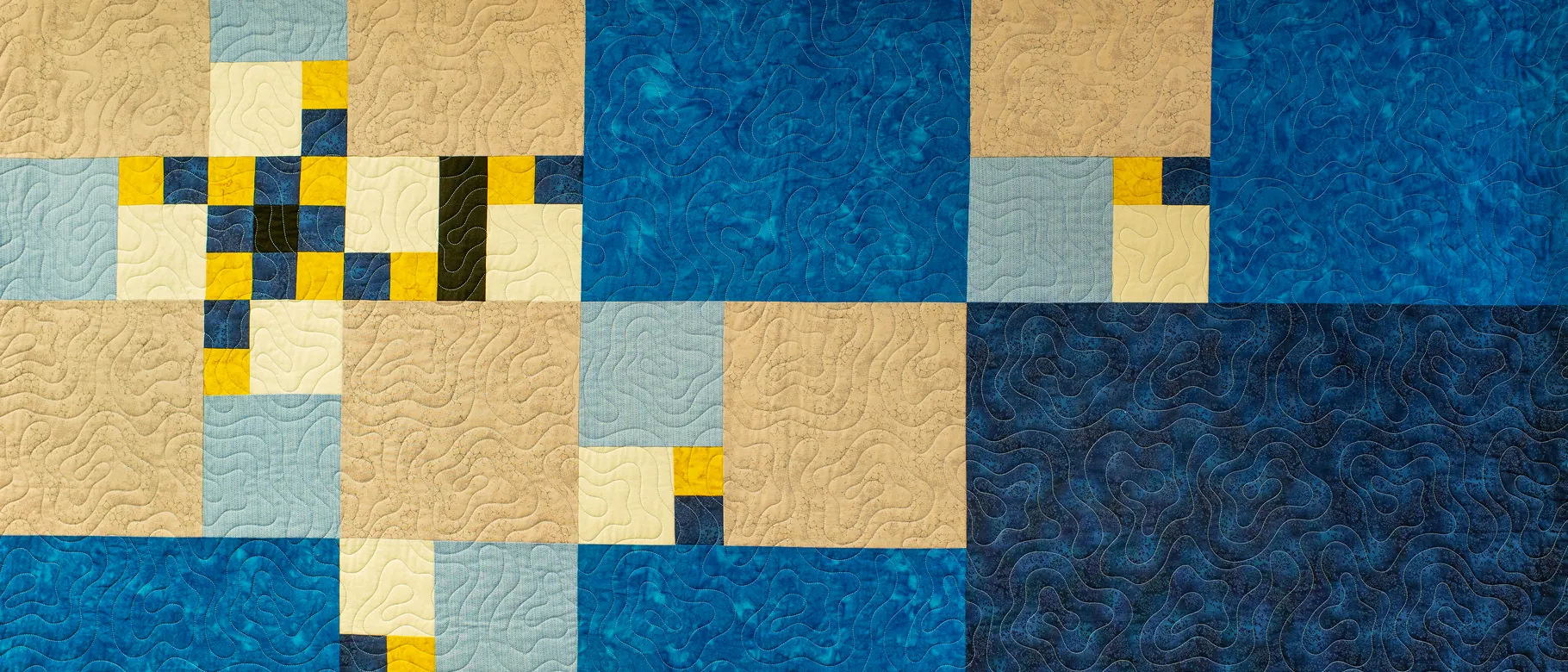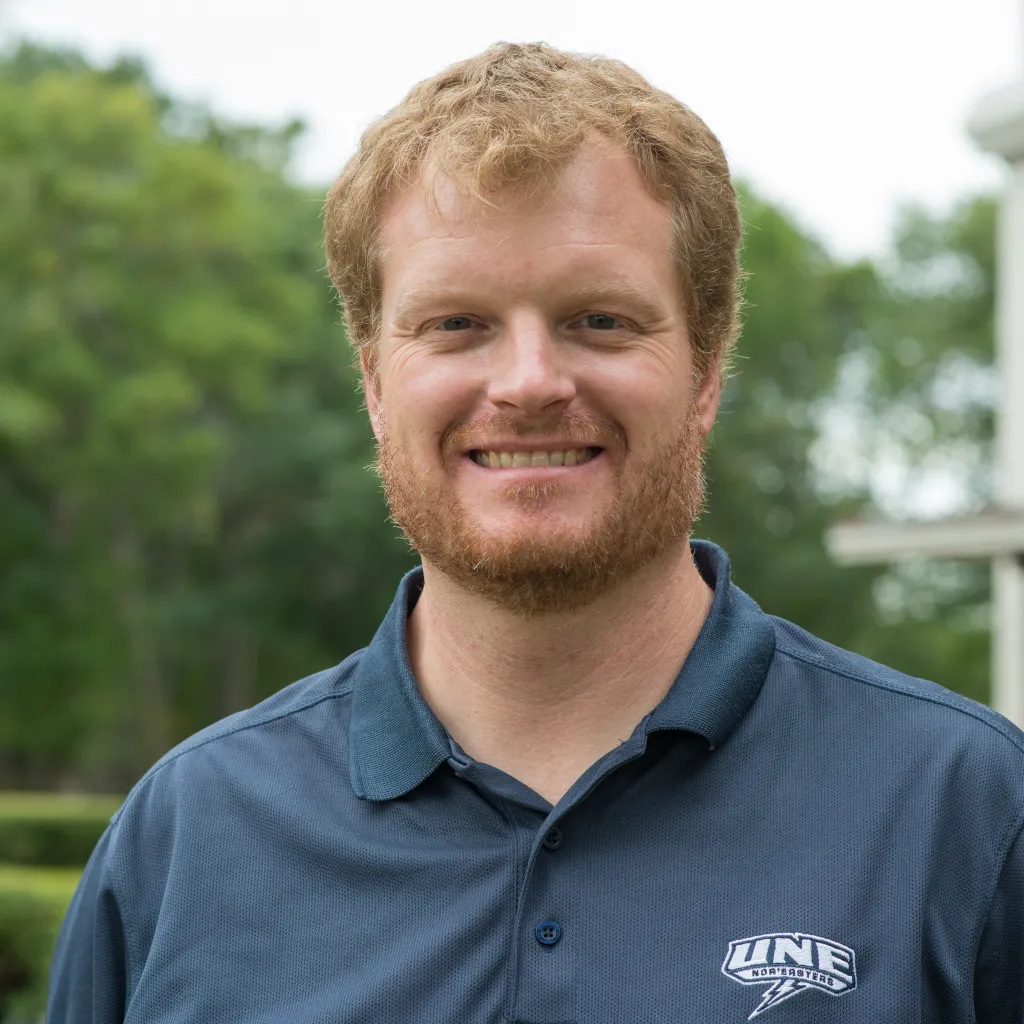UNE faculty member designs quilt that showcases the art of mathematics

Visitors to the third floor of Decary Hall on the University of New England’s Biddeford Campus might notice a new addition to its walls.
Across from Room 336, adjacent to the office of Ryan D. Hedstrom, M.S.T., associate teaching professor in the School of Mathematical and Physical Sciences, hangs a quilt in the design of the Fibonacci sequence.
Hedstrom himself designed the quilt — which bears UNE’s own signature colors — while his mother, Anita Hedstrom, stitched it together by hand. Hedstrom said it has been a goal of his to collaborate with her on a project for some time.
“My mom has been quilting for many years, and I’ve always wanted to work with her to do some sort of mathematical quilt,” he said. “I’d always wanted to do something with her and finally got the opportunity to make that happen, and we had the privilege of donating it to UNE.”
The quilt features the numeric blocks produced by the Fibonacci sequence, which dictates that each sequential number is the sum of its two preceding numbers when starting from 0 and 1 (0, 1, 1, 2, 3, 5, 8, ...). When drawn in two dimensions, the sequence produces the signature golden spiral associated with the mathematical value of Phi: the “golden ratio.”
Hedstrom’s family has longstanding ties to UNE.
His great-uncle, Fr. Normand Thibodeau, served as president of the high school at St. Francis College (UNE precursor) from 1955 to 1960, and his uncle, Omer Thibodeau, attended that school before it became a four-year college later on.
As for the quilt, which was displayed virtually at the Maine Quilt Show this past July, Hedstrom said he hopes people can see where the lines blur between art and the mathematical sciences.
“I hope people see something that’s not necessarily purely mathematical or artistic, but they can see the connection between them, both,” he said.
